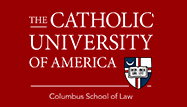Abstract
How should courts resolve thorny human rights disputes that arise within religious groups? According to an emerging international consensus, they shouldn’t. When a case involves sensitive internal decisions by a religious organization, such as choosing who is qualified to teach the faith, courts are increasingly taking a hands-off approach. This global consensus has formed across international treaties, tribunals, and domestic courts in European and American nations. Every major human rights instrument and many international and domestic courts recognize that religious freedom must extend to religious communities, especially houses of worship and schools where believers gather to practice their faith and impart it to the next generation.
This article conducts a comparative analysis of religious autonomy across international human rights instruments, international courts, and a selection of individual countries. We argue that the autonomy of religious institutions is an internationally recognized principle that protects decisions related to internal religious governance, including who teaches the faith to the next generation. To allow secular governments to dictate who teaches the faith and how it is taught in spheres explicitly governed by church leaders would violate that religious autonomy. Instead, we urge international courts to provide clarity and guidance to countries seeking to apply thereligious freedom provisions in their own laws by respecting the ability of religious organizations to govern who teaches their doctrines.
The recent case of Pavez v. Chile at the Inter-American Court of Human Rights provides a counter-example to the growing consensus. There, the court found Chile liable for discrimination when it respected a local church decision regarding who was qualified to teach Catholicism to students in a devotional setting in a state-run school. Rather than engage with the reasoning of the international law on church autonomy, the court acknowledged this body of law, but declined to apply it in the case, maintaining that the state should retain authority over the church in who teaches the faith. In so doing, the Court attempts to force the separate spheres of church and state to merge, asserting control over the church and its relationship with the government. Without a well-reasoned theory behind this attempt, however, it is unlikely to be repeated in other serious adjudicative bodies.
Recommended Citation
Diana V. Thomson & Kayla A. Toney,
Sacred Spheres: Religious Autonomy As An International Human Right,
72
Cath. U. L. Rev.
1
(2023).
Available at:
https://scholarship.law.edu/lawreview/vol72/iss2/6
Included in
Civil Rights and Discrimination Commons, Comparative and Foreign Law Commons, Constitutional Law Commons, Election Law Commons, First Amendment Commons, Human Rights Law Commons, International Law Commons, Litigation Commons, Nonprofit Organizations Law Commons, Religion Law Commons, Supreme Court of the United States Commons



